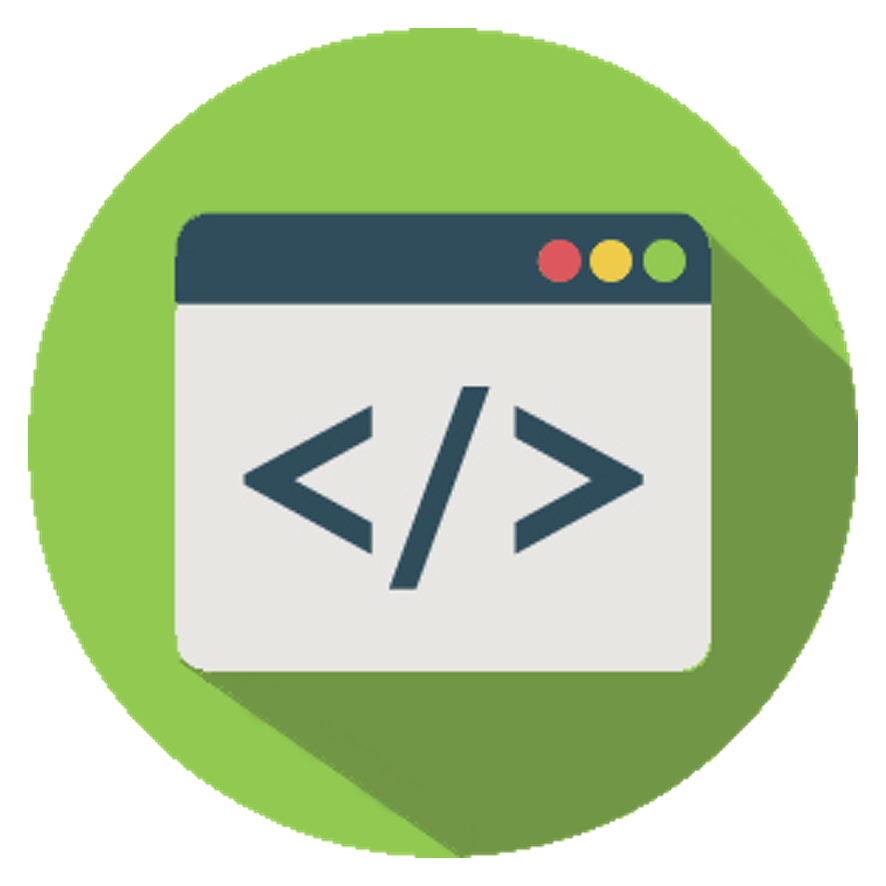ComputationalWorkflow Profile
Version: 1.0-RELEASE (09 March 2021)
Bioschemas specification for describing a Computational Workflow
If you spot any errors or omissions with this type, please file an issue in our GitHub.
Key to specification table
- Green properties/types are proposed by Bioschemas, or indicate proposed changes by Bioschemas to Schema.org
- Red properties/types exist in the core of Schema.org
- Blue properties/types exist in the pending area of Schema.org
- Black properties/types are reused from external vocabularies/ontologies
CD = Cardinality
| Property | Expected Type | Description | CD | Controlled Vocabulary | Example |
|---|---|---|---|---|---|
| Marginality: Minimum. | |||||
| @context | URL | Used to provide the context (namespaces) for the JSON-LD file. Not needed in other serialisations. |
ONE | ||
| @type | Text | Schema.org/Bioschemas class for the resource declared using JSON-LD syntax. For other serialisations please use the appropriate mechanism. While it is permissible to provide multiple types, it is preferred to use a single type. |
MANY | Schema.org, Bioschemas | |
| @id | IRI | Used to distinguish the resource being described in JSON-LD. For other serialisations use the appropriate approach. | ONE | ||
| dct:conformsTo | IRI | Used to state the Bioschemas profile that the markup relates to. The versioned URL of the profile must be used. Note that we use a CURIE in the table here but the full URL for Dublin Core terms must be used in the markup (http://purl.org/dc/terms/conformsTo), see example. |
ONE | Bioschemas profile versioned URL | |
| creator |
Organization Person |
Schema: The creator/author of this CreativeWork. This is the same as the Author property for CreativeWork. |
MANY | ||
| dateCreated |
Date DateTime |
Schema: The date on which the CreativeWork was created or the item was added to a DataFeed. |
ONE | ||
| input |
FormalParameter |
Schema: An input required to use the computational workflow (eg. Excel spreadsheet, BAM file) |
MANY | ||
| license |
CreativeWork URL |
Schema: A license document that applies to this content, typically indicated by URL. |
MANY | ||
| name |
Text |
Schema: The name of the item. Bioschemas: The name of the item as input |
ONE | ||
| output |
FormalParameter |
Schema: An output produced by the workflow |
MANY | ||
| programmingLanguage |
ComputerLanguage Text |
Schema: The computer programming language. |
MANY | ||
| sdPublisher |
Organization Person |
Schema: Indicates the party responsible for generating and publishing the current structured data markup, typically in cases where the structured data is derived automatically from existing published content but published on a different site. For example, student projects and open data initiatives often re-publish existing content with more explicitly structured metadata. The sdPublisherproperty helps make such practices more explicit. Bioschemas: The host site for the ComputationalWorkflow |
ONE | ||
| url |
URL |
Schema: URL of the item. |
ONE | ||
| version |
Number Text |
Schema: The version of the CreativeWork embodied by a specified resource. Bioschemas: Version is a release. The date modified may not warrant a release, but last date modified and access to all versions is important |
ONE | ||
| Marginality: Recommended. | |||||
| citation |
CreativeWork Text |
Schema: A citation or reference to another creative work, such as another publication, web page, scholarly article, etc. |
MANY | ||
| contributor |
Organization Person |
Schema: A secondary contributor to the CreativeWork or Event. |
MANY | ||
| creativeWorkStatus |
DefinedTerm Text |
Schema: The status of a creative work in terms of its stage in a lifecycle. Example terms include Incomplete, Draft, Published, Obsolete. Some organizations define a set of terms for the stages of their publication lifecycle. |
ONE | ||
| description |
Text |
Schema: A description of the item. |
ONE | ||
| documentation |
CreativeWork URL |
Schema: Documentation describing the ComputationalWorkflow and its use. Bioschemas: Documentation describing the ComputationalWorkflow and its use. |
MANY | ||
| funding |
Grant |
Schema: The funding for the workflow |
MANY | ||
| hasPart |
CreativeWork |
Schema: Indicates an item or CreativeWork that is part of this item, or CreativeWork (in some sense). Inverse property: isPartOf. Bioschemas: The tools/scripts that are (potentially) used by the ComputationalWorkflow when it is executed, The parts are not ordered; they normally correspond to steps in the workflow, there is no specified mapping. |
MANY | ||
| isBasedOn |
CreativeWork Product URL |
Schema: A resource from which this work is derived or from which it is a modification or adaption. Supersedes isBasedOnUrl. Bioschemas: This is normnally another ComputationalWorkflow, but may also be, for example, a paper or a lab protocol. |
ONE | ||
| keywords |
Text |
Schema: Keywords or tags used to describe this content. Multiple entries in a keywords list are typically delimited by commas. |
ONE | ||
| maintainer |
Organization Person |
Schema: A maintainer of a Dataset, software package (SoftwareApplication), or other Project. A maintainer is a Person or Organization that manages contributions to, and/or publication of, some (typically complex) artifact. It is common for distributions of software and data to be based on “upstream” sources. When maintainer is applied to a specific version of something e.g. a particular version or packaging of a Dataset, it is always possible that the upstream source has a different maintainer. The isBasedOn property can be used to indicate such relationships between datasets to make the different maintenance roles clear. Similarly in the case of software, a package may have dedicated maintainers working on integration into software distributions such as Ubuntu, as well as upstream maintainers of the underlying work. |
MANY | ||
| producer |
Organization Person |
Schema: The person or organization who produced the workflow |
MANY | ||
| publisher |
Organization Person |
Schema: The publisher of the creative work. Bioschemas: Where it came came from, e.g. Galaxy, github, or WF Hub if uploaded |
MANY | ||
| runtimePlatform |
Text |
Schema: Runtime platform or script interpreter dependencies (Example - Java v1, Python2.3, .Net Framework 3.0). Supersedes runtime. |
MANY | ||
| softwareRequirements |
Text URL |
Schema: Component dependency requirements for application. This includes runtime environments and shared libraries that are not included in the application distribution package, but required to run the application (Examples: DirectX, Java or .NET runtime). Supersedes requirements. Bioschemas: Renaming schema.org/requirements as softwareRequirements |
MANY | ||
| targetProduct |
SoftwareApplication |
Schema: Target Operating System / Product to which the code applies. If applies to several versions, just the product name can be used. |
MANY | ||
| Marginality: Optional. | |||||
| alternateName |
Text |
Schema: An alias for the item. |
MANY | ||
| conditionsOfAccess |
Text |
Schema: Conditions that affect the availability of, or method(s) of access to, an item. Typically used for real world items such as an ArchiveComponent held by an ArchiveOrganization. This property is not suitable for use as a general Web access control mechanism. It is expressed only in natural language. For example “Available by appointment from the Reading Room” or “Accessible only from logged-in accounts “. |
ONE | ||
| dateModified |
Date DateTime |
Schema: The date on which the CreativeWork was most recently modified or when the item’s entry was modified within a DataFeed. |
ONE | ||
| datePublished |
Date |
Schema: Date of first broadcast/publication. |
ONE | ||
| encodingFormat |
Text URL |
Schema: Media type typically expressed using a MIME format (see IANA siteand MDN reference) e.g. application/zip for a SoftwareApplication binary, audio/mpeg for .mp3 etc.). In cases where a CreativeWork has several media type representations, encoding can be used to indicate each MediaObject alongside particular encodingFormat information. Unregistered or niche encoding and file formats can be indicated instead via the most appropriate URL, e.g. defining Web page or a Wikipedia/Wikidata entry. Supersedes fileFormat. Bioschemas: Should be the type of the workflow |
MANY | ||
| identifier |
PropertyValue Text URL |
Schema: The identifier property represents any kind of identifier for any kind of Thing, such as ISBNs, GTIN codes, UUIDs etc. Schema.org provides dedicated properties for representing many of these, either as textual strings or as URL (URI) links. See background notes for more details. |
MANY | ||
| image |
ImageObject URL |
Schema: An image of the item. This can be a URL or a fully described ImageObject. |
MANY | ||






